Many beginning gardeners think that preparing a greenhouse in the fall to winter is a futile event that takes a lot of time and effort. But this is not so. It is during this period before the onset of frost that it is necessary to decontaminate the soil, possibly replace the soil, repair the greenhouse structure, and flush the roof. All these works carried out in the fall will save time in the spring and get a decent harvest in the new season.
Content
The need for winter preparations
In early spring, greenhouse conditions are needed for young seedlings to hide from the cold. The design of the greenhouse and the material of manufacture allow maintaining the optimum temperature and maintaining the humidity, which is necessary for the good development and growth of plants. But such a microclimate of the greenhouse is favorable not only for plantations, but also for pathogens, weeds.
Bacteria that have survived in the greenhouse after harvesting the fruits are calmly overwintered, and in the spring they will begin wrecking raids. So you can lose the future harvest. In structures coated with polycarbonate or glass, it is comfortable to work in cold autumn weather. To prepare a greenhouse for winter after a tomato, you need to hold an event, which consists of two main areas:
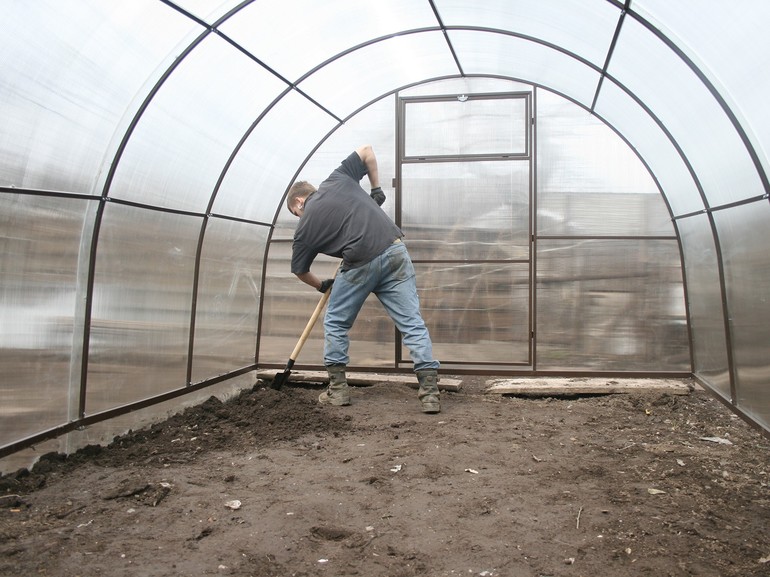
- Tillage. After the harvest, the greenhouse soil is depleted, especially if the same crop was grown for several years in a row. Therefore, before future planting, it is necessary to restore the soil for good growth and fruiting of plants. In autumn, you need to apply those fertilizers that require a long processing: manure, green manure.
- Repair, disinfection of the frame and coating. Over time, the fastening of the greenhouse wears out, the design loses its stability. It is necessary to inspect it and, if necessary, make repairs: replace parts, paint. In the spring there may not be time for such an event, and under the influence of precipitation and temperature changes the condition of the greenhouse will deteriorate.
Polycarbonate coating feature
Greenhouse structures made of polycarbonate have gained popularity and are widely used in personal plots and cottages. Currently, greenhouses made from polycarbonate are considered the best for growing early crops. They are characterized by such advantages:
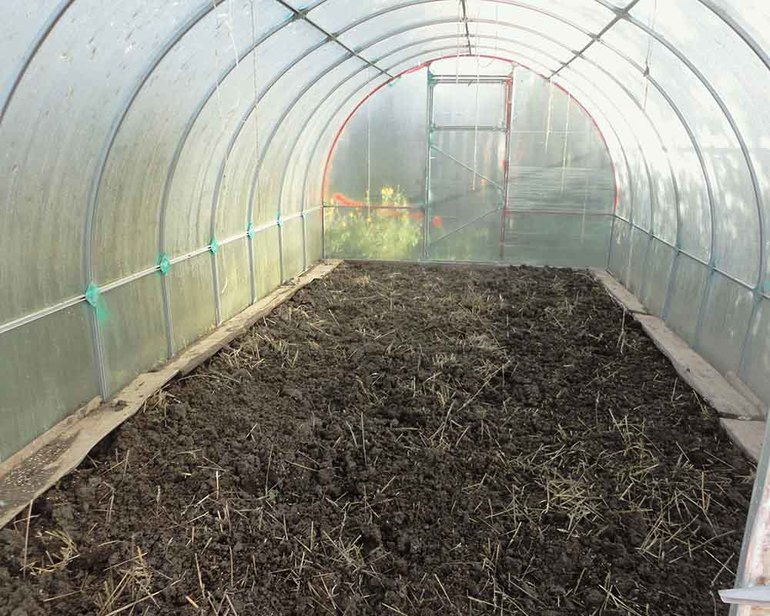
- They retain heat well and transmit light.
- The uniqueness of polycarbonate lies in its ability to scatter and repeatedly reflect the sun's rays in different directions.
- Thanks to the scattered rays, plantings in such hotbeds receive more light than in glass ones, in which the rays do not refract and do not change their directions.
- Polycarbonate on the outside is covered with a film that protects against the harmful effects of ultraviolet radiation.
- The material is very durable, resists adverse weather conditions, mechanical shock.
Greenhouse cleaning and tillage
In order to prepare a polycarbonate greenhouse for winter after a tomato that has not been exposed to a fungal disease and pest attacks, a scheduled cleaning should be performed. In this case the following activities should be carried out:
- remove the remains of vegetation;
- restore impoverished soil;
- put in order the design of the greenhouse.
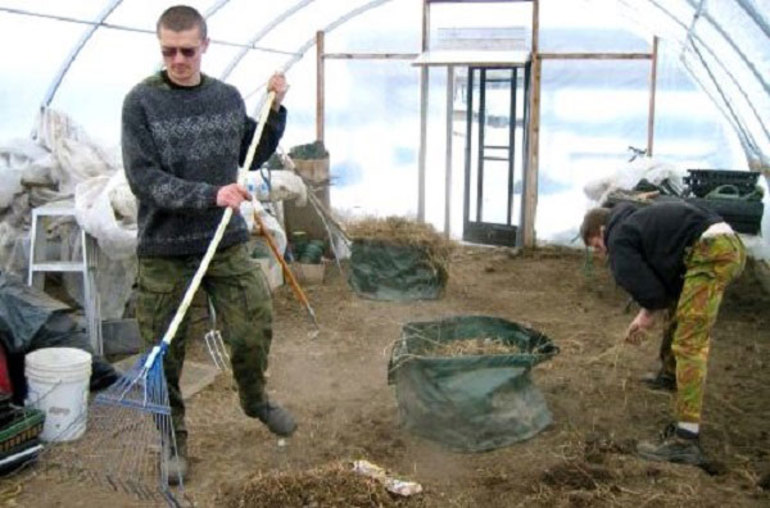
First of all, after harvesting, the beds should be cleaned of plant debris - tomato tops, remaining fruits, weeds. All this needs to be burned, even if signs of disease or pest damage are invisible.
It is on the remains of greenery that eggs of harmful insects, spores of fungi, various viruses are preserved. Some varieties go into the ground to return to the beds next season, especially after a mild winter.
The top soil layer of 5-10 cm needs to be dug with a pitchfork and all the roots of the plantations must be collected. The same should be done outside the greenhouse, removing the remnants of annual plants and weeds.
For better burning of the tops, dry the tomato, and the remaining ashes, which is no worse than wood ash, scatter along the bed. It can be used for dusting bushes as a means of pest control.
The next step in preparing the polycarbonate greenhouse for winter is to restore the quality, and hence the soil fertility. For this, organic fertilizing should be laid in the soil or the beds should be covered with a layer of green manure. To enrich the earth with organic matter, you need to take a mixture of fresh manure, humus and compost. For 1 square. m make 5 to 10 kg of the prepared mass.
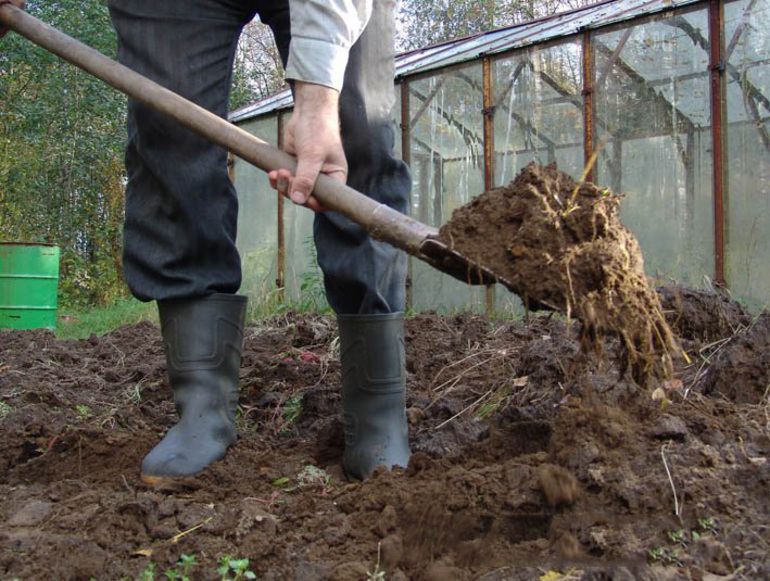
Bean crops, lupins or mustard are recommended as siderates for growing tomatoes. They are used if there is an early tomato variety in the greenhouse and the beds are released from harvest by mid-August, not later, otherwise the crops will not have time to grow for their further use. Siderata should build green mass. Only after that they are cut off at the root and laid out on the soil with a layer of up to 10 cm.
After enrichment with organic or a layer of green manure, the soil must be watered with such means as “Shine”, “Baikal”, “East”. These biological products containing effective microorganisms will create the appropriate microflora, which will enrich the soil with humus and improve its quality, as well as neutralize bacteria and fungi. Watering with these products is especially necessary if fresh manure has been introduced into the soil, since it contributes to the development of pathogenic microflora.
Prevention for constructions
Before starting a cleaning activity, the greenhouse should be disassembled, if the design allows. Assembled, poor-quality processing is possible. Then you should wash all the components of the greenhouse - the frame, coating, fasteners.
Elements of the construction of polycarbonate, plastic, glass, as well as the film material are washed with a soap solution. To carry out preventive disinfection, it will be enough to use a strong soapy solution (a piece of laundry soap in 10 liters of water).
When processing material characteristics should be considered:
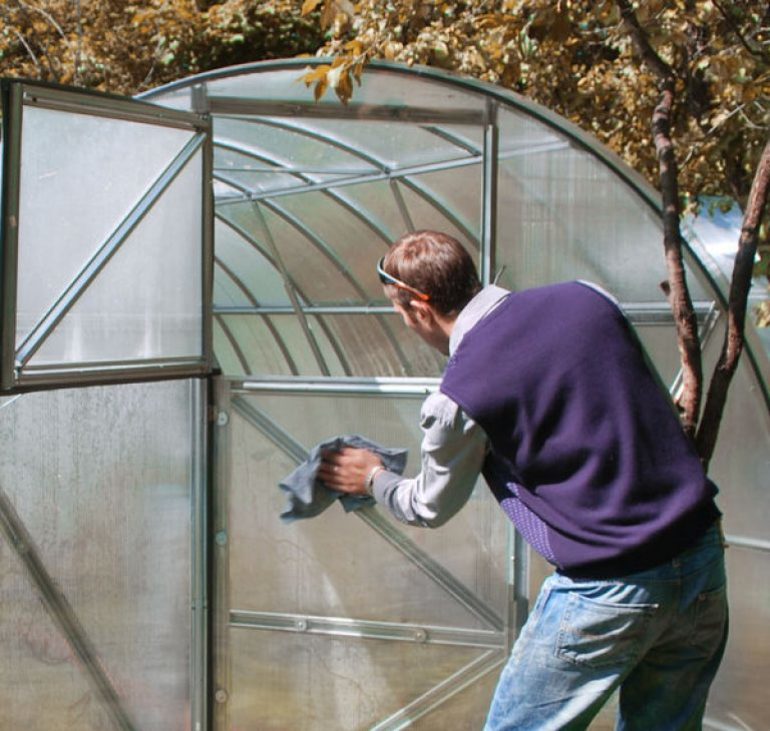
- For polycarbonate surfaces, do not use a stiff brush or burlap cloth. It is better to use pieces of soft tissue or a sponge.
- The film coating must be removed for the winter, otherwise by spring it will become unusable. Wash, dry and rolled up to store until spring.
- Wash the metal frame, dry thoroughly with a piece of cloth and paint.
- Wooden reinforcement is whitewashed.
Disinfection after diseases and pests
If the plantings in the greenhouse were infected with diseases or parasites, to prevent the occurrence of relapse in the next season, it is necessary to disinfect the fortifications. Choosing processing method greenhouse, you should consider what material the frame and transparent surfaces of the building are made of.
The aluminum construction, in contrast to the wood and PVC, is recommended to be subjected to heat treatment with boiling water. The event is held after removing the polycarbonate or film coating.
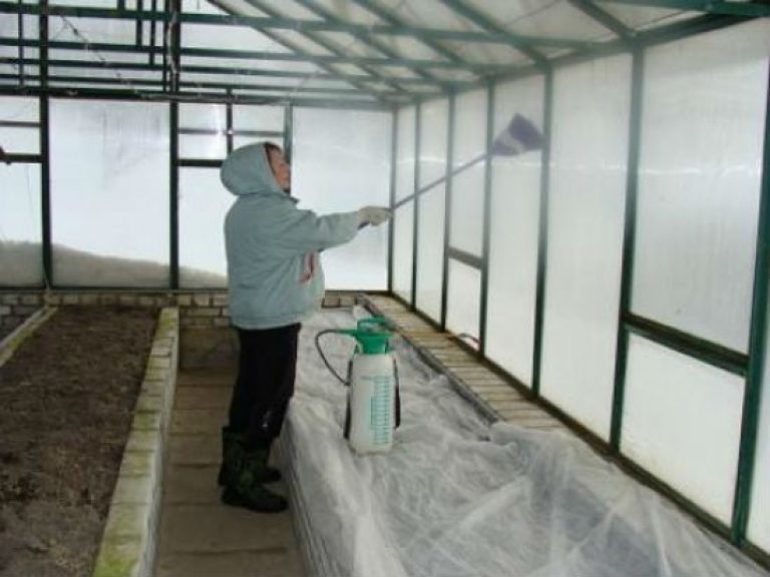
To disinfect a metal device, you can use a solution prepared from 9% vinegar and 20 parts of water. For the best effect, it is added to boiling water. If the metal parts are varnished, 1% Bordeaux can be used.
Often, PVC pipes are used as the frame for the greenhouse. For efficient processing such a design a solution of bleach is suitable:
- 400 g of the substance dissolved in 10 l of water;
- leave for 4 hours, stirring occasionally;
- drain the upper part of the settled solution, and treat the frame with the remaining mass.
You can disinfect a plastic structure with an acetic solution of the same concentration as for aluminum products. The temperature should not be above +60 degrees.
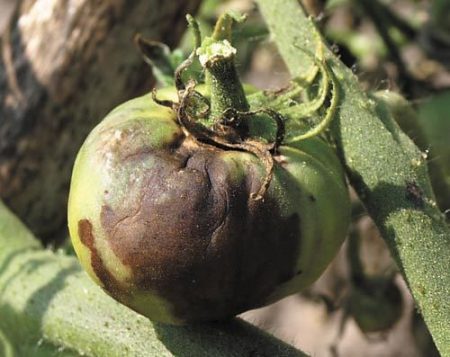 You may be interested in:
You may be interested in:Wooden fortifications
It is best to disinfect wooden structures with copper sulfate or Bordeaux liquid. Prepare a solution with a concentration of 8-10%, then cover the wooden base. To enhance the effect of the product, the surface must first be treated with bleach. After all the procedures, allow the wood to dry and then cover with freshly slaked lime.
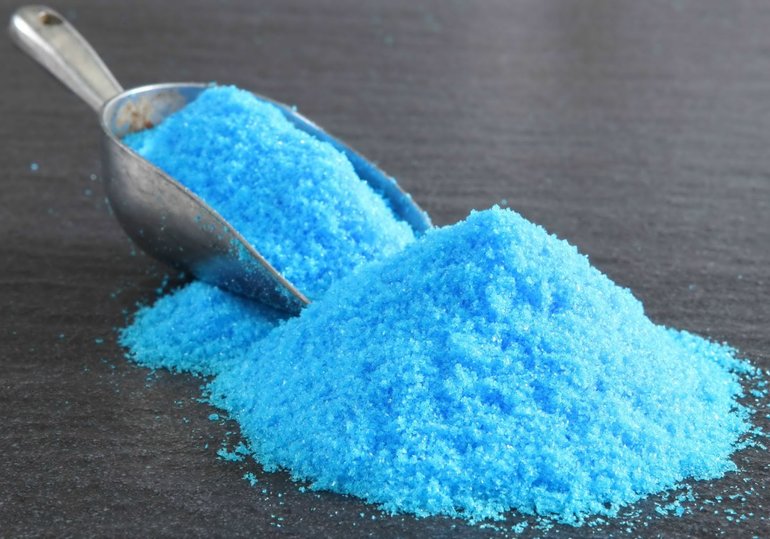
The tree is drying up over time, and it is simply impossible to process cracks of various sizes, especially small ones. In this case, you can use the method of fumigation with sulfur, which is especially convenient for non-demountable greenhouses. You need to do the following:
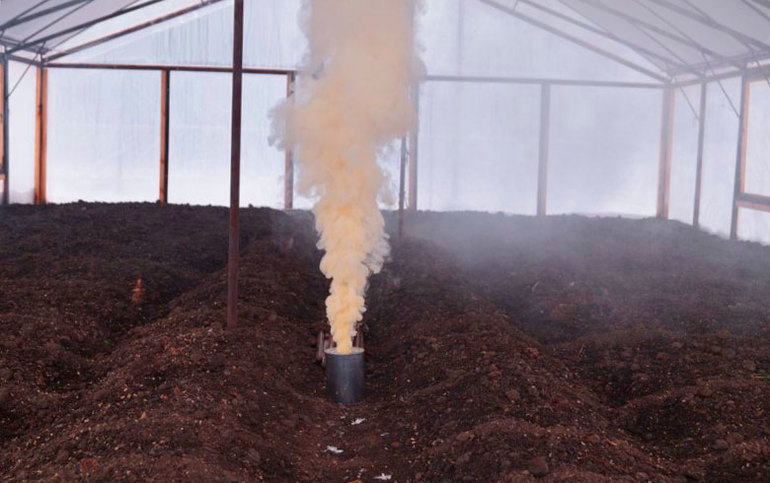
- In wooden beams to close up all the cracks.
- To enhance the effect of the procedure, moisten the inside of the greenhouse with water.
- It is necessary to perform fumigation with rubber gloves, and to protect the eyes and respiratory organs, use a gas mask and goggles, since, when burned, the substance releases compounds harmful to the human body.
- For this method, sulfur or sulfur blocks are used with a proportion: per 10 cubic meters. - 1 kg of sulfur or 600 g of sulfur drafts.
- The product must be crushed and mixed with coal.
- Place metal fryers filled with the mixture in containers with water (for fire safety) and place over the entire area of the greenhouse.
- Then set fire to the mixture. With closed doors and windows in the greenhouse, the substance should smolder for 5 days.
- After this, the greenhouse should be well ventilated. After the procedure, the polycarbonate coating should be washed with a soda solution.
This method can be used to disinfect a greenhouse with a PVC construction; for metal frames, the use of such measures is undesirable. When burning sulfur, substances are released that contribute to the development of the corrosion process of the metal. Fumigation is carried out in structures made of glass, film, polycarbonate.
All coatings are disinfected with solutions: glass and polycarbonate coatings - with bleach, polycarbonate panels - potassium permanganate, film - 4% solution of copper sulfate. Then the material is allowed to dry and put away for storage.
If signs of vegetation disease and the presence of harmful insects were found in the greenhouse, the means by which tomatoes and wooden props were tied should be burned. If it was plastic or metal pegs, you need to withstand them for half an hour in a solution of manganese or in a tool such as Fitosporin. After that, they need to be rinsed, dried and stored.
Soil clearance
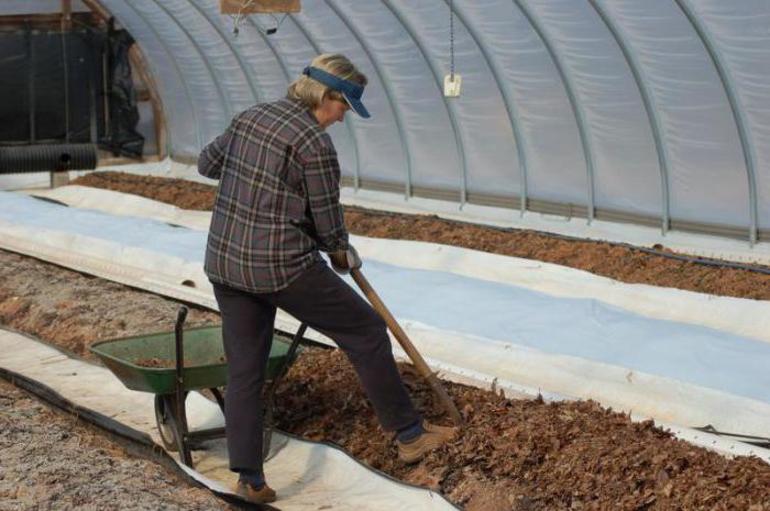
It is possible to cultivate the soil with chemicals only in autumn. During the event, before planting seedlings, the roots, and then the fruits, are saturated with harmful substances. If the tomato bushes were exposed to disease, soil should be sprayed:
- a solution of iron (2.5%) or copper (10%) vitriol;
- means "Fitosporin-M" (at soil temperature above 10 degrees);
- Bordeaux liquid (10%).
The drugs: “Fitoverm”, “Trichodermin”, as well as a 4% solution of bleach (if the disease is caused by a spider mite, the concentration should be 10%) will help fight pest larvae. In the second method of soil neutralization, a layer of about 15–20 cm is removed and with it the main part of the larvae of pests, fungal spores and bacteria, as well as the roots and seeds of weeds. A mixture consisting of rotted manure and compost, peat, sand is laid out at this place. A useful additive would be ash wood, leaves. Further, the earth is dug up together with a new layer, and then mulched with straw.
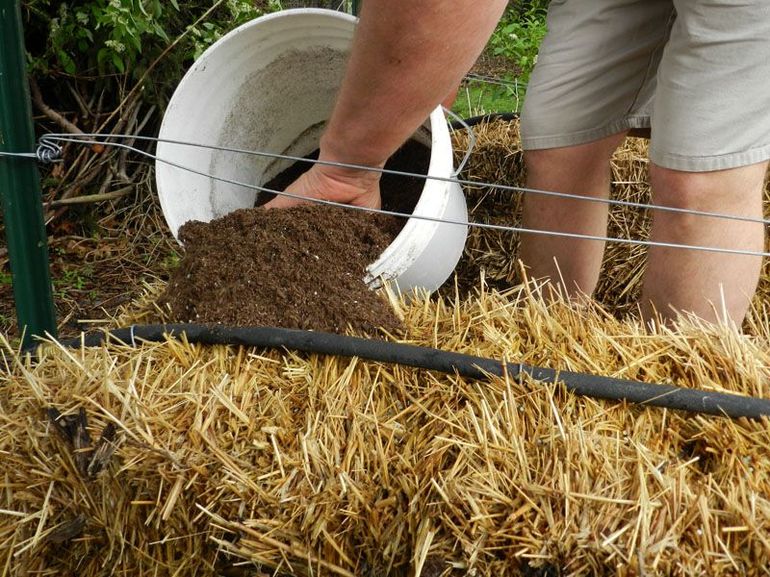
Listening to the helpful advice of summer residents on preparing the greenhouse for the winter, you can learn a lot. For example, you can’t plant tomatoes on the same bed every year, you should alternate crops.
Carrying out the autumn harvest, one can not leave roots in the ground. Pathogenic bacteria hide in them, which easily overwinter and will attack the plantations again next season.
If you make indentations in the ground over the area of the greenhouse and fill them with dry foliage or hay, and then sprinkle with soil, the process of heating the soil in the early spring will accelerate. The leaves will swirl, resulting in - heat and raise the temperature of the surrounding soil.

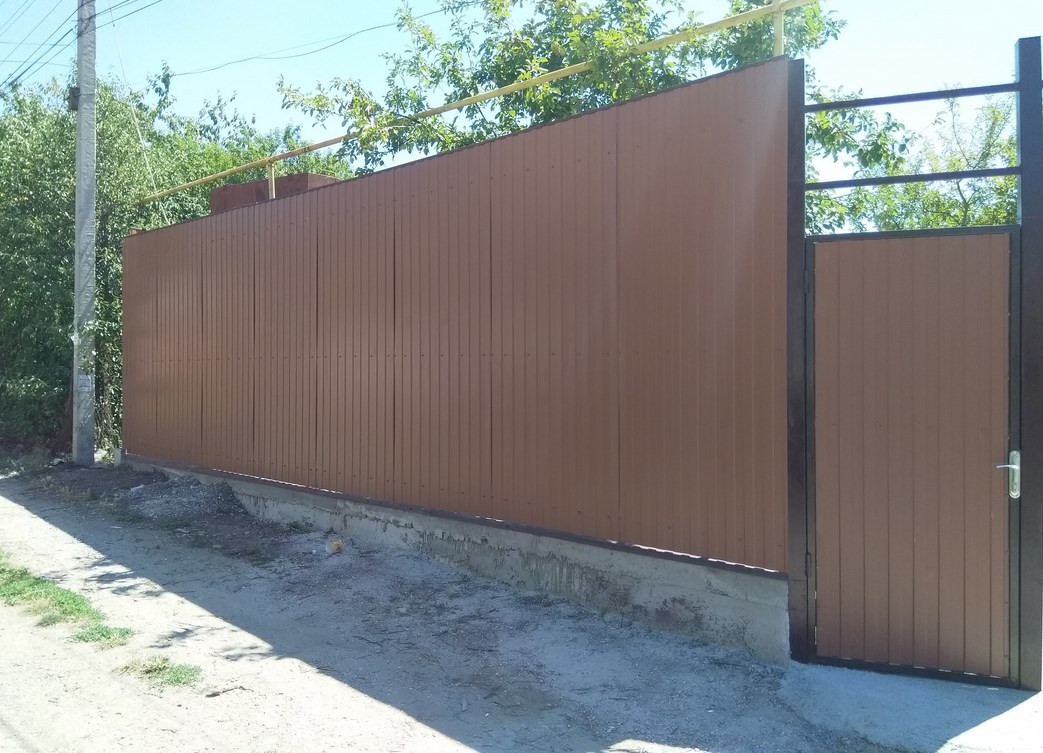
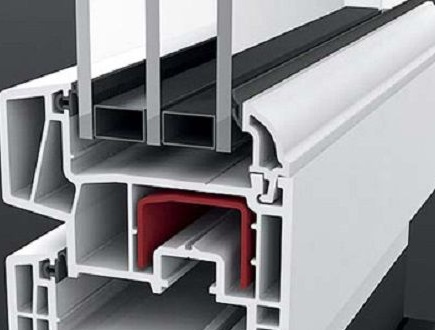
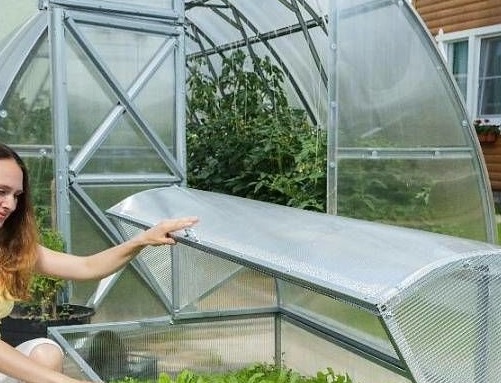
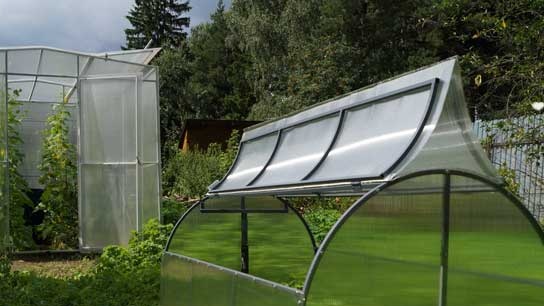 Why is a greenhouse open top?
Why is a greenhouse open top?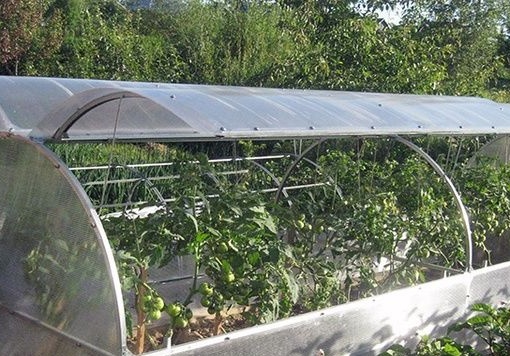 Greenhouse "Butterfly", is it worth it?
Greenhouse "Butterfly", is it worth it? Do-it-yourself landscaping of an area of 8 acres: features of planning and zoning
Do-it-yourself landscaping of an area of 8 acres: features of planning and zoning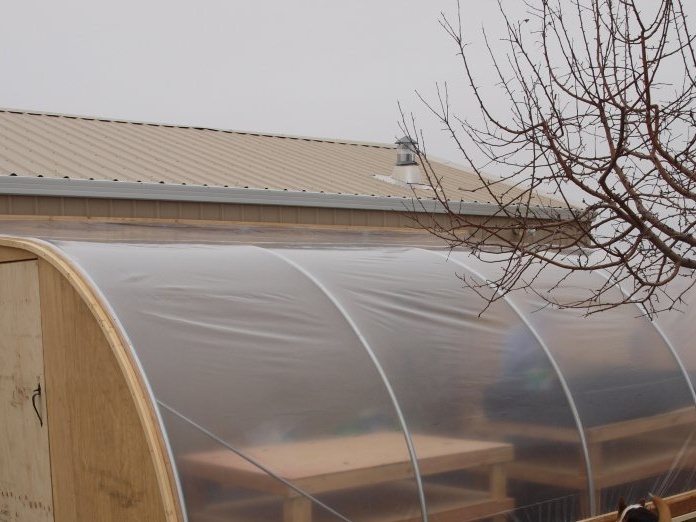 Shed greenhouse, pros and cons
Shed greenhouse, pros and cons